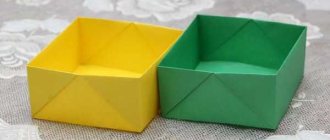As everyone knows from theory, a technological process is a series of operations performed sequentially one after another and aimed at obtaining finished products from initial raw materials and materials.
In relation to the woodworking we are considering, this could be the production of sheathing boards or floor boards (finished products) from pine wood (raw material). Or the production of cabinet furniture from laminated chipboards.
At the same time, it is striking that the majority of technological processes in general and in woodworking in particular are complex processes, which in turn can be broken down into simpler ones.
Thus, the technological process for producing cladding boards from pine wood is divided into a set of technological processes for preparing the material (sawing, drying, giving the correct geometry, profiling, decorative coating) until the final product is completely ready.
In the case of the technological process for the production of cabinet furniture from laminated chipboards, this is a set of technological processes for manufacturing its parts, assembling them into the final product and equipping them with fittings until they are completely ready.
Thus, it is obvious that the final products or finished products obtained from wood are very diverse. They can consist of a large number of parts of different shapes and sizes. The parts themselves can be solid or consisting of other parts, as well as composite (glued). Each part also requires its own technological process for production.
Technological processes for processing parts consist of separate operations. An operation is usually called a process that occurs in relation to identical parts using unchanged means of labor. Operations can be divided into technological and auxiliary.
Technological operations are those during which parts change size, condition, shape and move within the workplace. These are, for example, planing, applying glue, milling, assembling and others like that. During auxiliary operations, the parts do not change - stacking, sorting, storage.
The workplace is an integral part of the technological process of wood processing. This is the name given to a certain part of the production facility on which the equipment, fixtures, materials and tools necessary to perform this operation are located. The order in which the necessary items are placed in the workplace is essential for the performance of any operation.
At modern woodworking enterprises, the technological processes for manufacturing wood products are mechanized. And the degree of mechanization, as a rule, depends on the volume of processing and, therefore, the size of the enterprise itself.
Technological processes in the manufacture of joinery and furniture products.
Now, from general words about the technological processes of manufacturing wood products, we can move on to considering specific examples, namely the production of joinery and furniture products.
The operation of drying lumber and veneer before sending it to production is one of the first stages of the technological process at enterprises using these materials.
The next important operation is cutting lumber into pieces of certain sizes, from which parts are then obtained. Such blanks after cutting are called rough blanks. The cutting operation can be carried out both before and after drying; everything here depends on the size and design of the workpieces and final products.
This is followed by the operation of machining the workpieces; it is usually divided into two stages. At the first stage, the workpieces are processed from four sides along the cross-section and given the final length, ensuring the correct geometric shape and dimensional accuracy. This stage is called mechanical processing of rough blanks; the result of its implementation is finishing blanks.
At the second stage of machining of workpieces, spikes and lugs are formed on the parts, holes are drilled, nests are selected, grinding, etc. This is the stage of mechanical processing of finishing workpieces, the result of which is finished parts.
Two stages of mechanical processing, one after the other, are typical for enterprises using solid wood blanks. If, for the manufacture of the final product, composite (glued) parts or parts that require additional special coating are used, then the technological process is supplemented with gluing or veneering operations.
The assembly operations of finished products can also be divided into several stages. At the first stage of the assembly operation, parts can be assembled into assembly units (frames, panels, boxes, etc.). At the next stage, the assembly units are subjected to additional processing to eliminate sagging, adjust dimensions and, if necessary, drill out sockets. The final stage is the final general assembly of the final product.
The finishing operation can be performed before or after the overall assembly of the final product.
The above listed operations, stages and stages of operations, in turn, are divided into simpler operations. For example, the operation of cutting boards into rough blanks includes sawing the boards lengthwise and cross-cutting, and when using glued blanks in the production, the operation of removing knots is also added. This may be preceded by the operation of preliminary marking of the board.
The operation is not some strictly regulated part of the technological process in woodworking. For example, in small woodworking enterprises, the assembly of parts into products can be performed by one worker at one workplace as one operation. At large enterprises, assembly can be divided into several independent operations performed by individual workers or teams at different workplaces.
This division of the operation, called differentiation, helps to increase labor productivity.
Board burning technique
Before starting work, you should have a clear idea of the future drawing and the methodology used. There are three types of burning:
- along the contour;
- by silhouette;
- artistic processing.
Burning along a contour is comparatively simple and resembles a pencil drawing of a contour on a sheet of paper. This type is often practiced by many beginners, often this operation is performed with the tip of a rod. Contour burning is convenient for making inscriptions, and when applying an ornament, shading can be applied in this way.
Silhouette burning is performed using two techniques: “smooth stroke” and “annealing”. Using the first of them, it is easy to achieve a smooth black surface. The area processed in this way can be quite large. By quickly moving the needle, different shades of the design are achieved.
When “annealing”, a strip is made along the edge of the workpiece, achieving the designation of the outer contour of the image. The name of this method comes from the nature of the work - annealing the edging.
The artistic or pictorial type of burning is characterized by a combination of the two previous methods. As a result, a three-dimensional image is achieved, taking into account the play of light and shadow. When manufacturing a product, it is necessary to ensure the correct display of objects at different distances in space. The transfer of different structures of objects is achieved by various techniques of shading and shading.
To master the burning technique perfectly, you must have good drawing skills. Regular exercise will improve your powers of observation. They will also help develop the necessary qualities. Before the process itself, craftsmen develop sketches in pencil. This approach will simplify the work on the workpiece.
Features of technological processes at enterprises of various sizes.
The features of the applied Technological process (differentiation of operations, equipment used, devices, labor organization) depend mainly on the volume of finished products produced. From the point of view of the scale of production of finished products, woodworking production is usually divided into individual, serial and mass.
With individual production, the output of finished products is insignificant, but with serial production they are produced in batches. At the same time, an important aspect of serial production is the ability to repeat the series. Serial production, in turn, can be divided into small-, medium- and large-scale production. In mass production, products of one type are produced continuously over a long period of time and in large quantities.
The most common in the production of wood products are individual (furniture and other products on special orders), small- and medium-scale production (serial furniture, turned and carved dishes, home decorations, etc.).
Other Articles Categories
- A little theory of cutting logs during sawmilling. / May 20, 2019 /
- About the wear of woodworking tools. / 19-Oct-2018 /
- Ensuring interchangeability in the production of wood parts. /20-Nov-2017/
- Debarking is an important operation in the woodworking process. / 17-June-2018 /
- Basics of cutting wood with woodworking tool cutters. / May 21, 2016 /
- Features of cladding chipboard and MDF boards in presses. / 07-Jul-2018 /
- Sawing wood and saws of various types / 17-Aug-2016 /
- Sawing wood with circular saws / 29-Nov-2016 /
- Sawing with band saws, advantages. / 21-Jan-2018 /
- Increasing the durability of woodworking tools / 20-Jan-2019 /
How to make a mallet with your own hands - step-by-step diagram
Step 1: Prepare the handle
It is best to use hard wood for the handle, such as oak or beech. Birch or walnut will also work. If it is possible to turn it on a lathe, then do this to obtain a round shape that is comfortable for the hand. In addition, this way you can make a protrusion in the middle of the handle so that there is a stop for the layers of skin. If you don’t have a lathe, you can wind several layers of rope for support.
Step 2: Preparing the Skin
You need to cut many round pieces of the leather of the same size. To begin, make one layout and mark the required amount on a piece of material for it - depending on the size of the working part itself, you will need from 50 to 70 of these circles. In addition, the thickness of the skin plays a role - the thicker it is, the fewer layers will be needed.
Step 3: String the Layers
Make a hole in each layer so you can thread the leather onto the handle. We connect each layer with subsequent PVA wood glue, trying to press the layers together as tightly as possible. When all layers are strung and coated with glue, clamp the tool in a vice or clamps until the glue dries completely.
Step 4: Attach the washer
To prevent the leather layers from falling off in the future, you need to attach a large washer - metal or wood - to the upper end of the handle. To do this, drill a hole in the handle itself, apply a washer and screw the bolt tightly. Of course, try to find the optimal size for your handle so that it does not crack. That's all! The leather will not shatter into small chips during operation; impacts actually stick to this material and do not create as much noise as when working with a conventional wooden tool. Of course, it makes sense to tinker with such a tool when you constantly work with chisels and have already changed more than a dozen mallets, but for infrequent use, an ordinary wooden hammer mallet is quite suitable!
What is a mallet?
When considering why a rubber mallet is needed, attention should be paid to the fact that not in all cases during work it is necessary to destroy and deform the material. Some areas of work require a soft approach to the issue. An example is that a rubber mallet or a wooden mallet is used when assembling furniture, processing metal plates, when installing ceramic tiles and in many other cases. The first versions of the product appeared before our era, but the need for it remains to this day.
The common rectangular plastic mallet is characterized by the following features:
- In appearance, the product resembles a hammer with an enlarged working part.
- When making the striker, not metal, but plastic is used. Even wood and rubber options have become widespread.
- The working part can be made in rectangular and cylindrical form.
- In most cases, the handle is made in the shape of an oval, but when creating a small version, a round shape can be used.
- A large mallet is used to perform a variety of jobs. In this case, the classification is carried out by weight, since there are options on sale from several hundred grams to several kilograms.
Today, an inertia-free rubber mallet is an integral part of almost any workshop. The wooden version is found in the field of roofing work; some models are used in furniture assembly.
A white mallet, which is manufactured in accordance with GOST, with a wooden striker, is often used when working with metals. The main task in application is to perform strong impacts that do not damage the surface.
It is not recommended to use a mallet for working with fragile materials, as even a slight blow can cause deformation.
Download GOST 19645-74
Area of application of the mallet
Working with a mallet is very common due to the fact that such a tool can be used for a wide variety of work. Among the features we note the following points:
- Most often, a rubber mallet is found in carpentry, where it is also used in conjunction with a chisel and chisel. However, dimensions and weight in this industry can vary significantly.
- In some cases, a hammer design is used, which resembles a turning mold. This design option is widely used in the wood cutting industry.
- The product is also found in metalworking. In this case, a wooden version with a round striker is used. In this case, the rubber striker is characterized by less efficiency in use, since due to increased rigidity the impacts become less clear. Therefore, in most cases, preference is given to a wooden striker.
- In the field of furniture assembly and dismantling, a similar tool has also become widespread. The working part can be represented by a rubber or wooden striker.
- A rubber mallet significantly simplifies the procedure for compacting the adhesive composition at the time of laying the tiles. It is worth considering that such work cannot be done without such a tool.
The information above indicates that the mallet is quite common and can be used for a wide variety of tasks.
Technological map of the mallet
On the Internet you can find a drawing of a mallet. It is worth considering that such a hammer can have a wide variety of shapes. An example is a rectangular, round, oval or cylindrical working part. Each master can make the tool independently, and a drawing of the mallet is developed in accordance with the assigned tasks. Among the features of the created technological map, we note the following points:
- A drawing with basic dimensions is being created.
- A table is created in which the main elements are indicated.
To make the main elements, a wood lathe is required. Maximum similarity with the drawing can only be ensured by using different templates.
Criteria for choosing a rubber mallet
There are simply a huge number of different versions of rubber mallets on sale, which makes it difficult to choose. The most important parameters are the following:
- Weight - with an increase in this indicator, the force of the strike increases significantly. Do not forget that a tool that is too heavy requires a lot of physical effort when performing the work. Light versions include rubber tools weighing 225-450 grams, heavy ones 900-1100 grams. Due to the infusion of lead into the central part, the weight of the product increases significantly.
- Length is another important parameter, which is selected depending on the type of work being carried out. Recently, fiberglass has been used in its manufacture, which is considered more durable and does not lose its shape during long-term use.
- The size of the striker is one of the main selection criteria. For delicate work, a version with a small striker is required; for rough work, a large striker is suitable.
Also, when choosing, attention is paid to the type of material used in manufacturing. Today, the firing pin is often made from different types of wood, which significantly reduces the recoil at the time of operation. Cost can also be called an important selection criterion; an economical version costs 100-250 rubles; the most in demand is a tool in the price range from 350 to 650 rubles.







